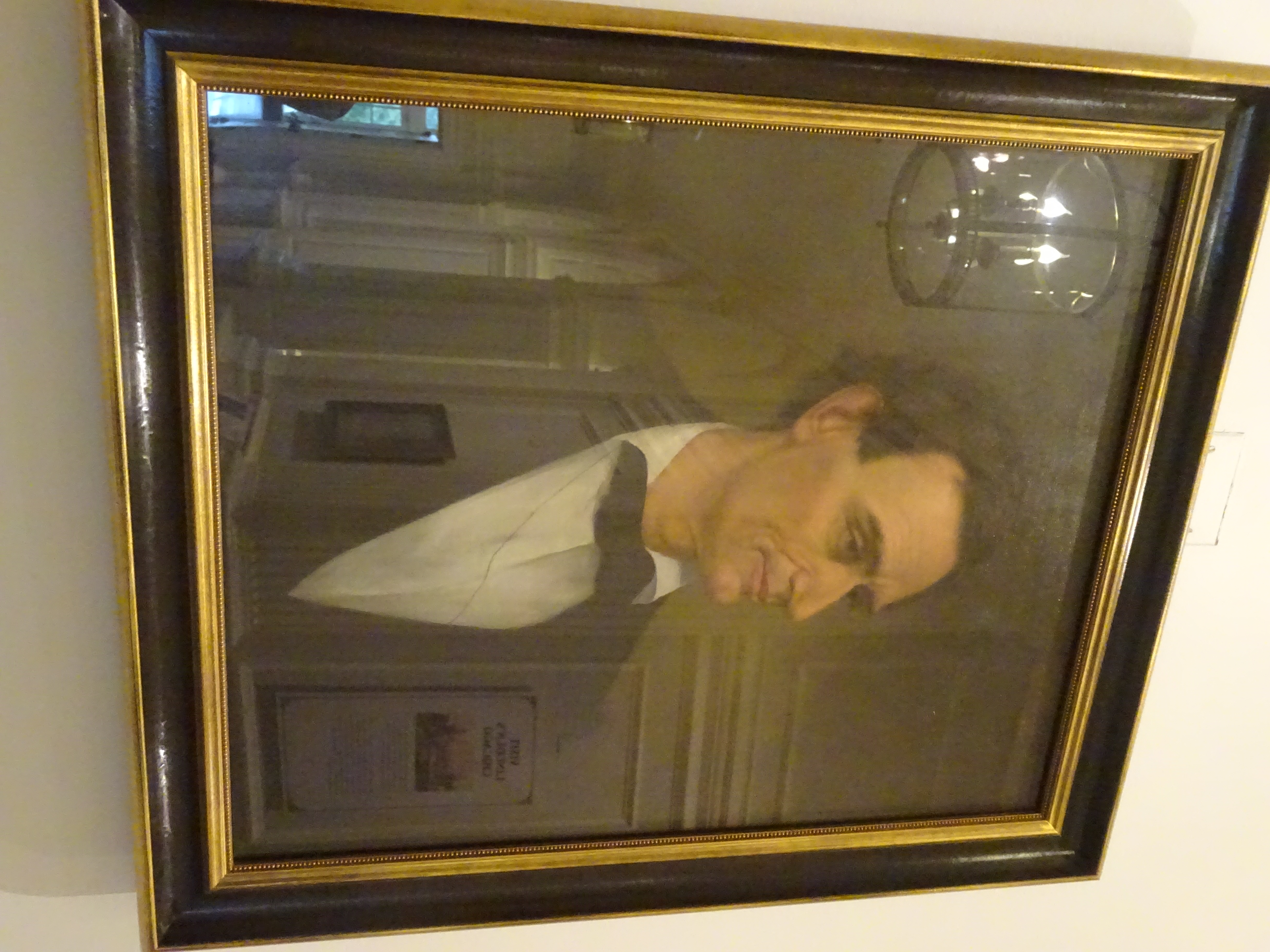 On October 4, 1861, Lincoln observed the ascension of a balloon piloted by John LaMountain from General Benjamin Butler’s headquarters at Fort Monroe, Virginia. The balloon passes over Washington and lands 12 miles away in Maryland. While the sanctimonious LaMountain is sometimes accredited with having made the first report of useful intelligence on enemy activity, he was quickly overshadowed by other aeronauts, the Civil War name for balloon pilots.
On October 4, 1861, Lincoln observed the ascension of a balloon piloted by John LaMountain from General Benjamin Butler’s headquarters at Fort Monroe, Virginia. The balloon passes over Washington and lands 12 miles away in Maryland. While the sanctimonious LaMountain is sometimes accredited with having made the first report of useful intelligence on enemy activity, he was quickly overshadowed by other aeronauts, the Civil War name for balloon pilots.
Lincoln also looked to the skies to give every advantage to Union troops. Researcher Charles M. Evans notes that Pennsylvanian John Wise is often credited with being the first American to make significant contributions to the science of ballooning, including atmospheric conditions and construction. LaMountain had joined Wise in an attempt to cross the Atlantic Ocean in 1859, an attempt that started in St. Louis and got no further than upstate New York before spectacularly crashing in a violent storm. Wise was joined early in the war by James Allen. But it was Thaddeus Lowe who had the most success engaging Lincoln and getting a contract to form an air corps. Lowe hooked up with Smithsonian Secretary Joseph Henry, and together they impressed Lincoln enough to gain his support. Lincoln repeatedly tried to get his first secretary of war, Simon Cameron, and General-in-Chief Winfield Scott to employ Lowe. Lincoln wrote General Scott on July 25, 1861, saying, “Will Lieut. Genl. Scott please see Professor Lowe, once more about his balloon.” When Scott still failed to act, Lincoln reportedly became more assertive, ordering Scott to “facilitate his work in every way.” Lowe eventually fielded a dozen balloons and made over three thousand ascensions using tethered balloons inflated by portable hydrogen gas generators. Lincoln gave Lowe the civilian title of chief aeronaut of the Union Army.
Lowe was an effective self-promoter who knew whose favors to garner. Joseph Henry had gotten him in the front door, Lincoln had gotten him a contract with General Scott, and his greatest use of balloons for reconnaissance was during General McClellan’s Peninsula campaign. To ingratiate himself with McClellan, Lowe put a picture of the general on the back of one of his biggest balloons, the Intrepid. But Lowe used another gimmick—he ran a telegraph line to the tethered balloon to report back in real time enemy troop numbers and movements. To ensure he maintained connection with the highest authority, on June 16, 1861, Lowe lifted his balloon Enterprise up near the White House and sent a telegraph to Lincoln: “This point of observation commands an area near fifty miles in diameter. . . . I have the pleasure of sending you this first dispatch ever telegraphed from an aerial station and in acknowledging indebtedness to your encouragement for the opportunity of demonstrating the availability of the science of aeronautics in the military service of the country.”
There were others who promoted balloons to Lincoln, although he quickly realized that some of them were cranks. Beginning early in 1861 and continuing throughout the Civil War, the prolific Edward L. Tippett sent many letters to Lincoln touting every possible invention, including balloons for warfare. One letter seemed to have caught Lincoln at a bad time in February 1865. In a long rambling letter, Tippett wanted the opportunity to demonstrate to Lincoln “the practicability; by a mathematical problem, easy to understand; of the absolute existence, of a self-moving machine, yet to be developed for the glory of God, and the happiness of the human family.” Unimpressed, Lincoln endorsed the outside of the envelope: “Tippett: Crazy Man.”
[Adapted from Lincoln: The Fire of Genius]
[Photo Credit: Smithsonian Institution archives]

Lincoln: The Fire of Genius: How Abraham Lincoln’s Commitment to Science and Technology Helped Modernize America is available at booksellers nationwide.
Limited signed copies are available via this website. The book also listed on Goodreads, the database where I keep track of my reading. Click on the “Want to Read” button to put it on your reading list. Please leave a review on Goodreads and Amazon if you like the book.
You also follow my author page on Facebook.
David J. Kent is President of the Lincoln Group of DC and the author of Lincoln: The Fire of Genius: How Abraham Lincoln’s Commitment to Science and Technology Helped Modernize America and Lincoln: The Man Who Saved America.
His previous books include Tesla: The Wizard of Electricity and Edison: The Inventor of the Modern World and two specialty e-books: Nikola Tesla: Renewable Energy Ahead of Its Time and Abraham Lincoln and Nikola Tesla: Connected by Fate.



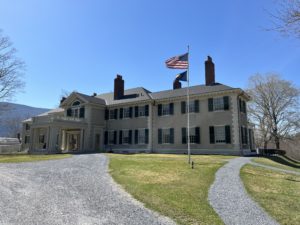 Mary Lincoln hated Washington, especially during the pestilent humidity of the capital city during the heat of summer. It’s the reason President Lincoln moved to the soldier’s home (now President Lincoln’s Cottage) each summer, beginning with 1862 after Willie’s death earlier that year. Mary would take Tad northward, often to New York and into New England, usually to be joined by Robert during his summer break from his studies at Harvard College. In 1863 they traveled to the White Mountains of New Hampshire, then in August of 1864 Robert met his mother and brother in the Green Mountains of Vermont. He intended to return with the president in the summer of 1865, but the assassination kept that from happening. Notwithstanding, the 1864 trip would capture Robert’s fancy enough to return decades later to build his own summer cottage known as Hildene.
Mary Lincoln hated Washington, especially during the pestilent humidity of the capital city during the heat of summer. It’s the reason President Lincoln moved to the soldier’s home (now President Lincoln’s Cottage) each summer, beginning with 1862 after Willie’s death earlier that year. Mary would take Tad northward, often to New York and into New England, usually to be joined by Robert during his summer break from his studies at Harvard College. In 1863 they traveled to the White Mountains of New Hampshire, then in August of 1864 Robert met his mother and brother in the Green Mountains of Vermont. He intended to return with the president in the summer of 1865, but the assassination kept that from happening. Notwithstanding, the 1864 trip would capture Robert’s fancy enough to return decades later to build his own summer cottage known as Hildene.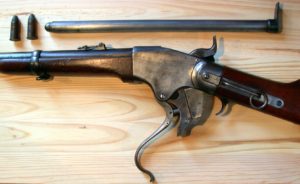 On August 17, 1863, Christopher M. Spencer, inventor of Spencer rifle, presents his new repeating rifle to President Abraham Lincoln and demonstrates how to assemble it. Lincoln was always keen on implementing new military technology during the Civil War, although his generals were not always so eager to follow his lead. Chief of Ordnance James Wolfe Ripley argued that more advanced weaponry was not self-evidently better in the field. Complicated weapons in the hands of untested soldiers and poor weather conditions led to vast inefficiencies in his mind, so Ripley denied the use of some of the new-fangled ideas Lincoln liked.
On August 17, 1863, Christopher M. Spencer, inventor of Spencer rifle, presents his new repeating rifle to President Abraham Lincoln and demonstrates how to assemble it. Lincoln was always keen on implementing new military technology during the Civil War, although his generals were not always so eager to follow his lead. Chief of Ordnance James Wolfe Ripley argued that more advanced weaponry was not self-evidently better in the field. Complicated weapons in the hands of untested soldiers and poor weather conditions led to vast inefficiencies in his mind, so Ripley denied the use of some of the new-fangled ideas Lincoln liked.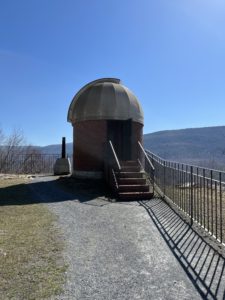 Robert Lincoln got his initial interest in astronomy from his father. Abraham Lincoln was fascinated by astronomy, as I discuss in my book,
Robert Lincoln got his initial interest in astronomy from his father. Abraham Lincoln was fascinated by astronomy, as I discuss in my book, 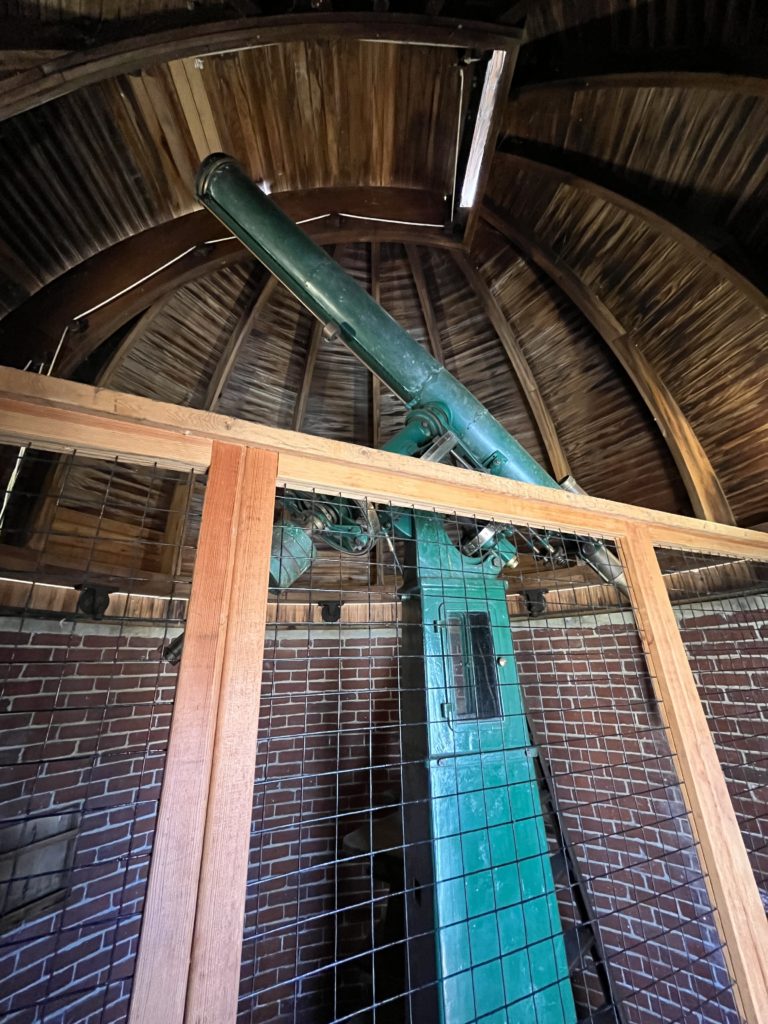
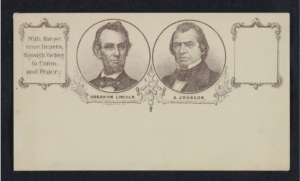 Today, July 26, marks the 75th anniversary of the opening of the Lincoln Papers at the Library of Congress.
Today, July 26, marks the 75th anniversary of the opening of the Lincoln Papers at the Library of Congress. Abraham Lincoln is the most memorialized president in American history, in terms of the number of monuments and statues in all fifty states and the U.S. territories. According to the
Abraham Lincoln is the most memorialized president in American history, in terms of the number of monuments and statues in all fifty states and the U.S. territories. According to the 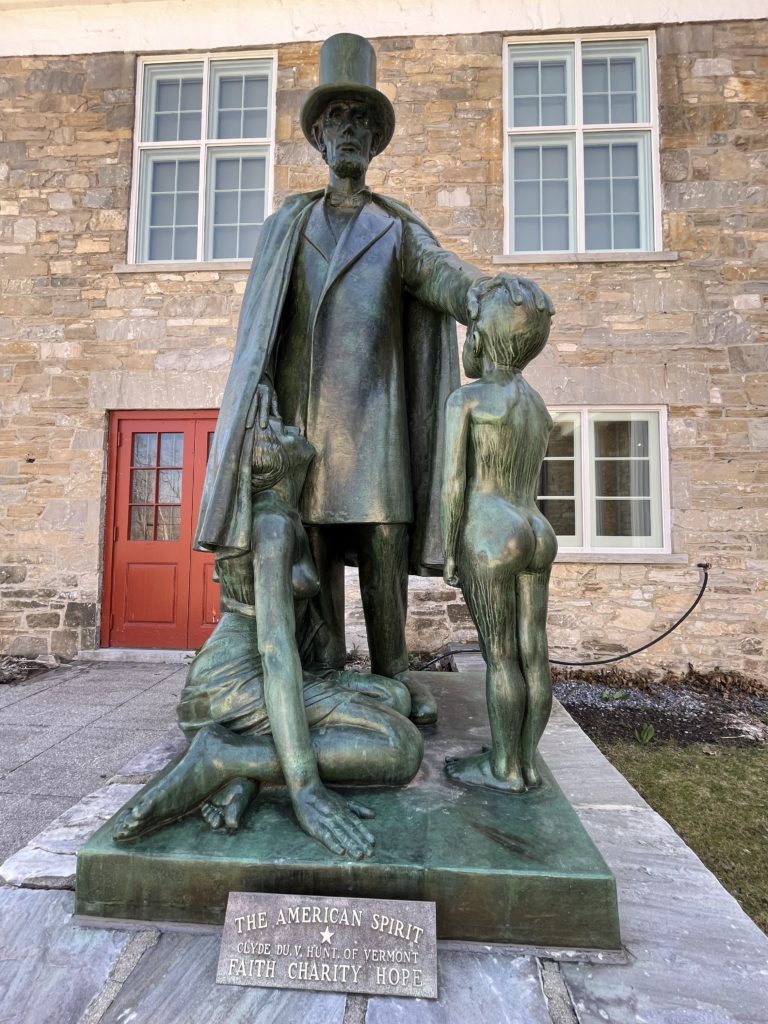
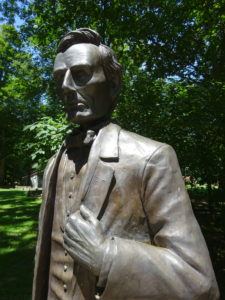
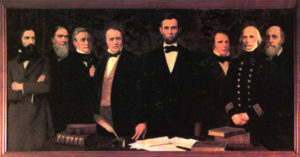 In Abraham Lincoln’s lecture on Discoveries and Inventions, he discussed how the ingenuity of man had made life easier for the growing millions of Americans. Early in the lecture he used biblical language to relate how the need for clothing led to technological advances, as was also true for communication. At one point he turned to transportation. As with clothing, he stressed the advantages of inventive, productive labor that improves the human condition. Here the goal was to advance beyond human motive power to get from place to place. Inventive thought led to development of the wheel, then wagons on land and boats on water. These were powered by animals such as horses, mules, and oxen on land, or wind and paddles on the water.
In Abraham Lincoln’s lecture on Discoveries and Inventions, he discussed how the ingenuity of man had made life easier for the growing millions of Americans. Early in the lecture he used biblical language to relate how the need for clothing led to technological advances, as was also true for communication. At one point he turned to transportation. As with clothing, he stressed the advantages of inventive, productive labor that improves the human condition. Here the goal was to advance beyond human motive power to get from place to place. Inventive thought led to development of the wheel, then wagons on land and boats on water. These were powered by animals such as horses, mules, and oxen on land, or wind and paddles on the water.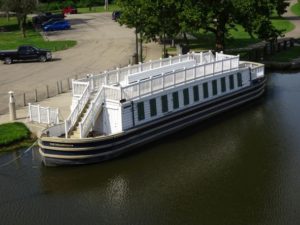 On June 20, 1848, Congressman Abraham Lincoln so strongly believed in the long-term economic benefit of improvements that he used some of the limited time allotted to freshmen congressmen to argue for internal improvements on the floor of the House. He began by rebutting the recent Democratic platform written for the 1848 nomination of Lewis Cass, which concluded the Constitution did not confer upon the federal government the power to carry on a system of internal improvements. Lincoln disagreed and systematically dismantled each of the positions offered to support that conclusion.
On June 20, 1848, Congressman Abraham Lincoln so strongly believed in the long-term economic benefit of improvements that he used some of the limited time allotted to freshmen congressmen to argue for internal improvements on the floor of the House. He began by rebutting the recent Democratic platform written for the 1848 nomination of Lewis Cass, which concluded the Constitution did not confer upon the federal government the power to carry on a system of internal improvements. Lincoln disagreed and systematically dismantled each of the positions offered to support that conclusion.